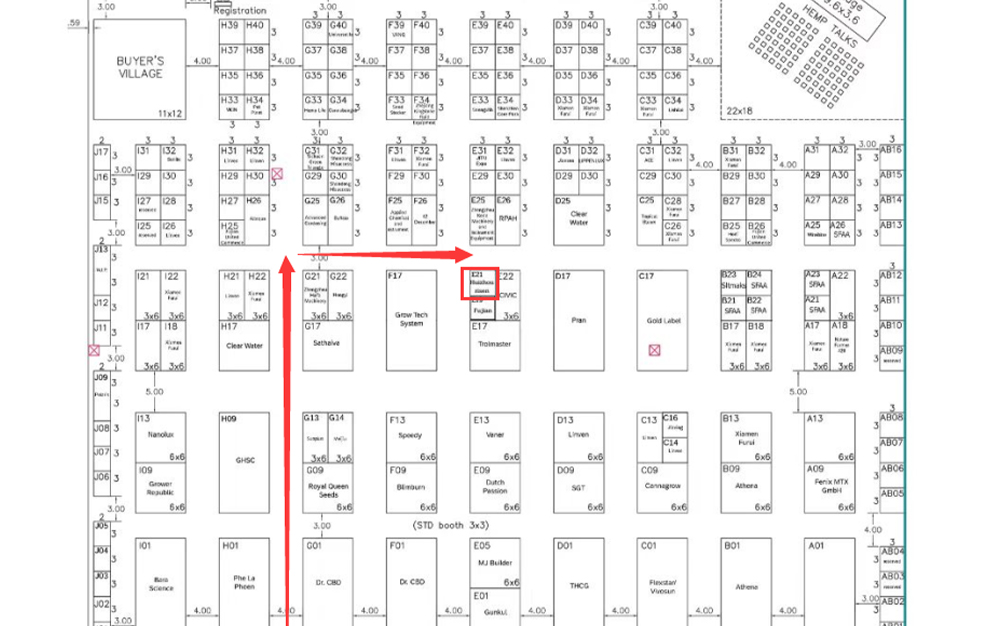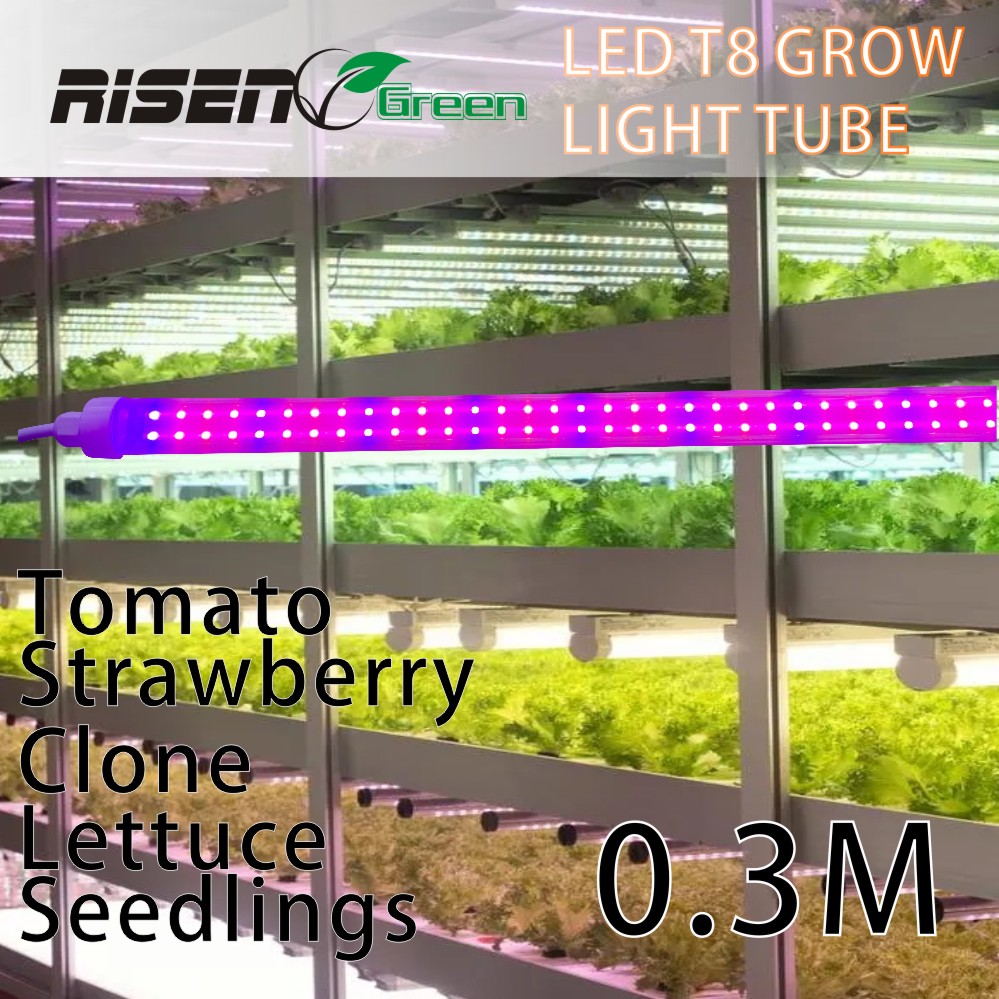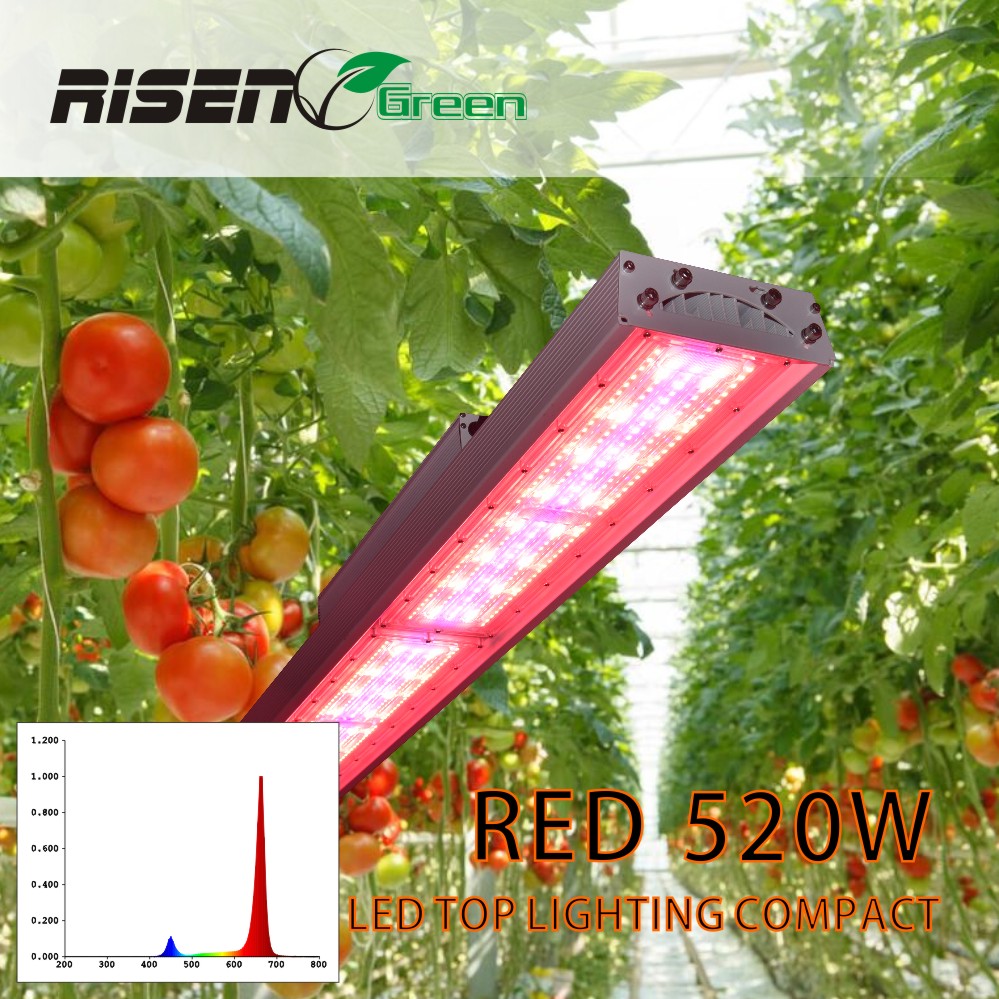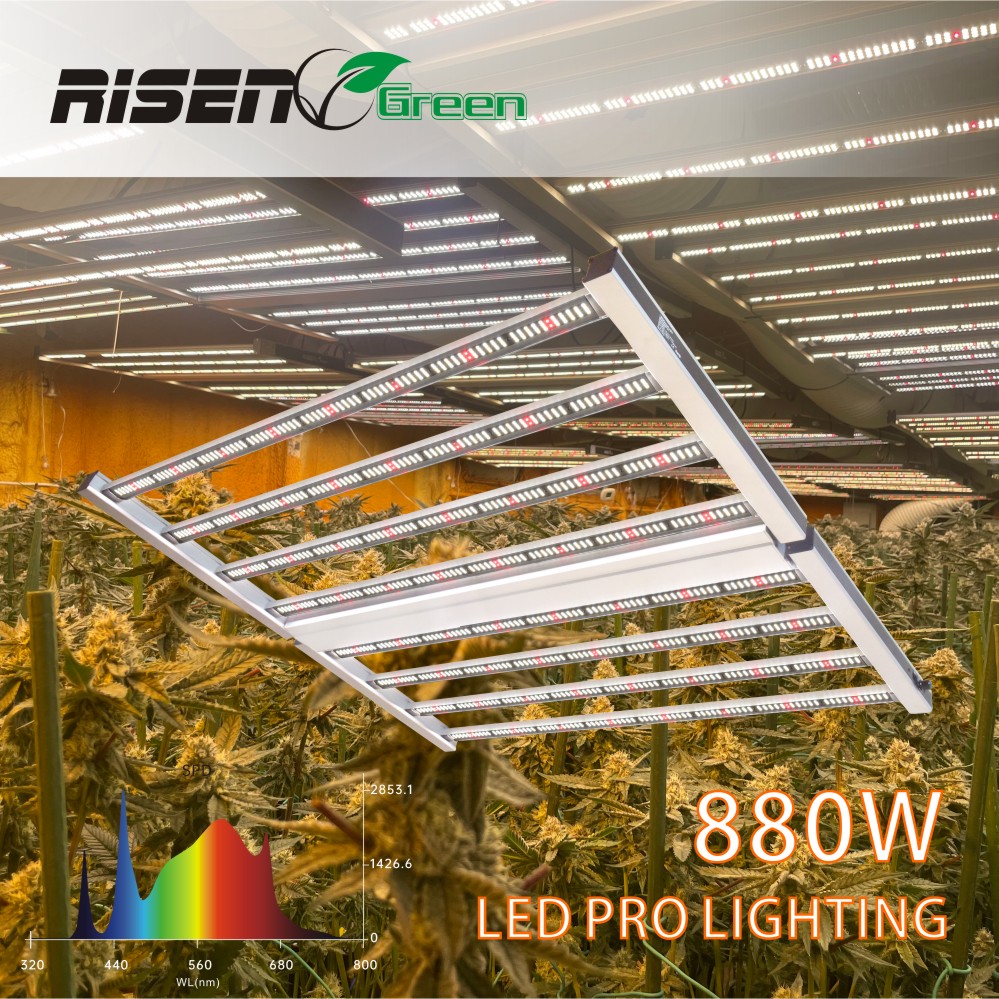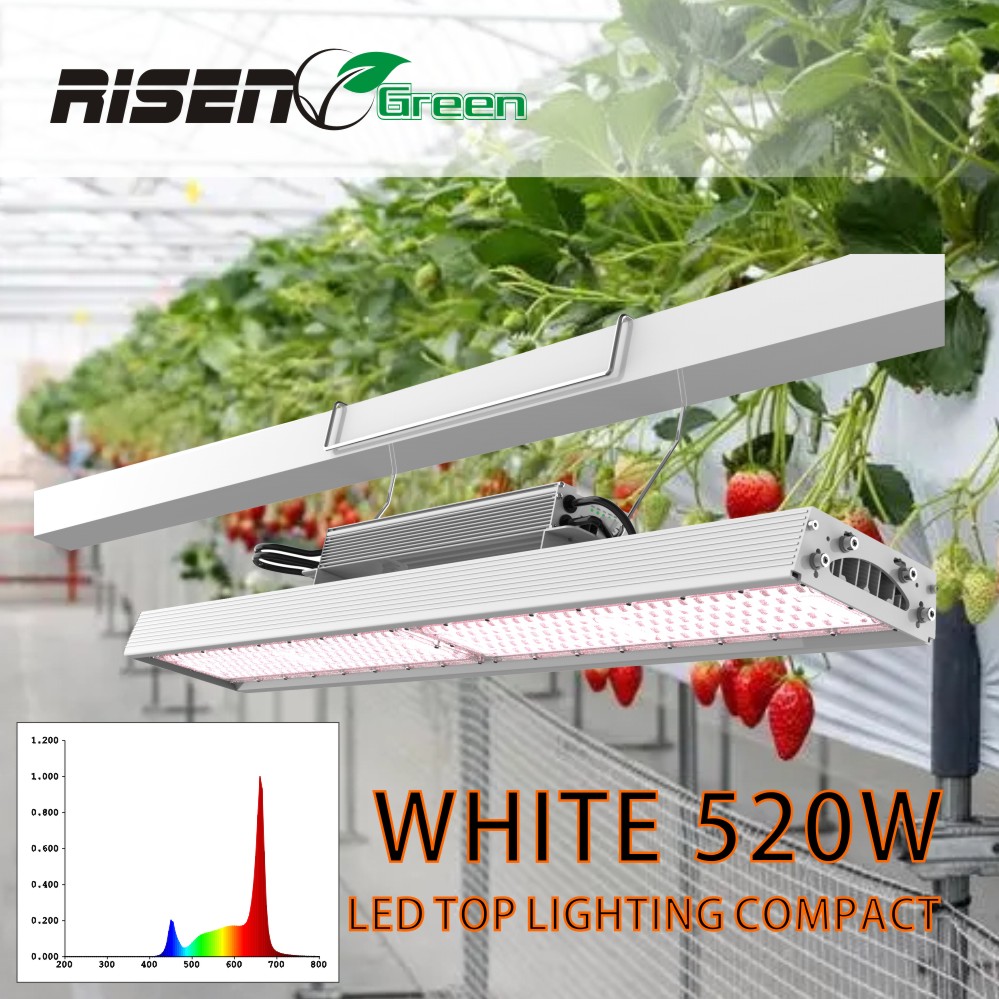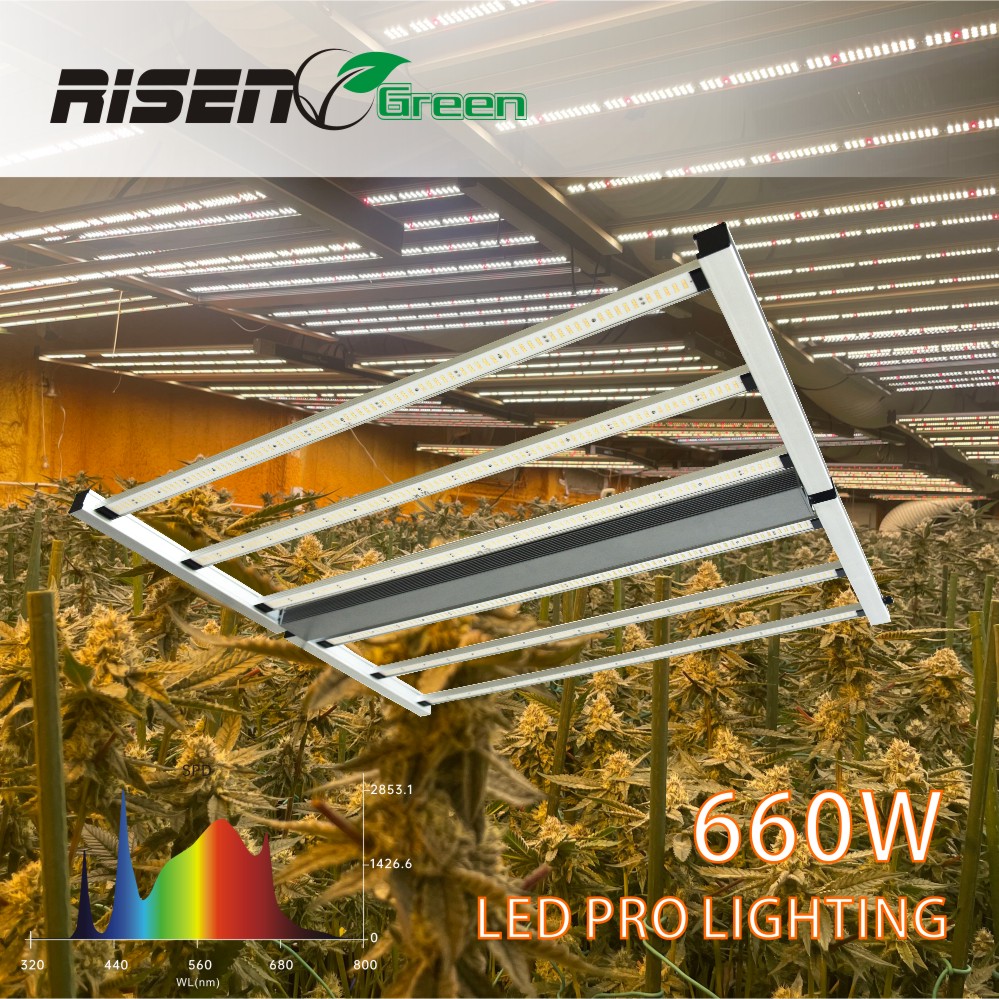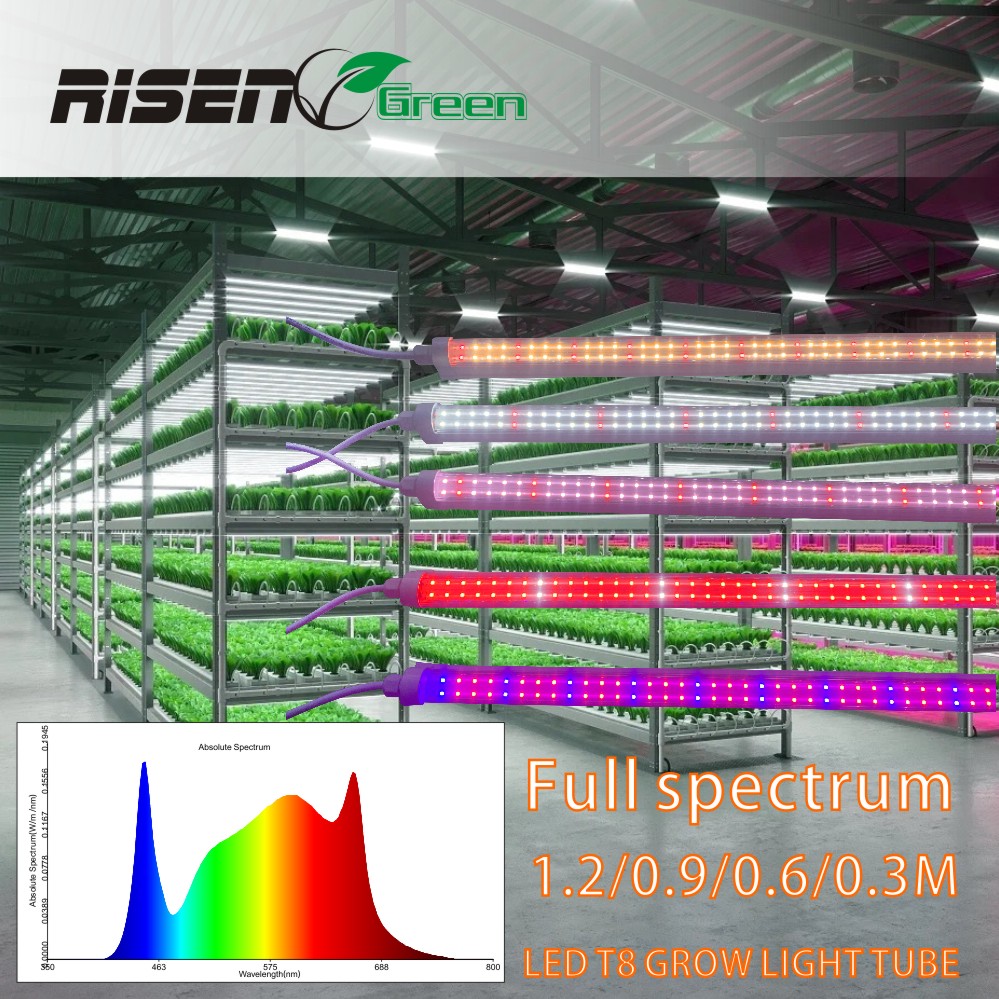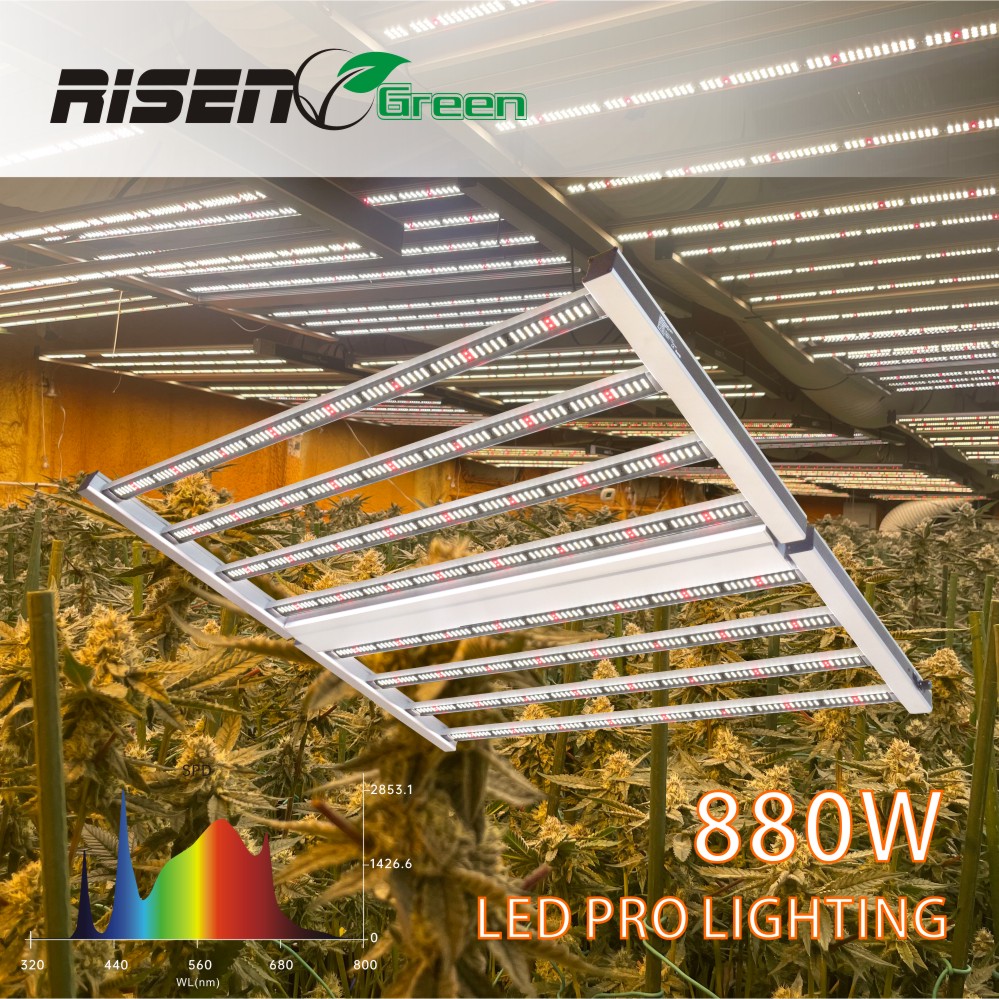Let's talk about the role of LED plant light spectrum - UVA, blue-white light, red-white light, and far-red light
The following are two relatively new spectrum studies, one is a new spectrum for basil cultivation, and the other is a spectrum for lettuce cultivation. If you are interested, you can refer to their papers.
We have lamps that are basically the same as these two spectra. If we change the relevant LED wavelength, they can be almost exactly the same.
I will compare these two spectra with a more humane spectrum (described later) to see the difference. The crops grown are also lettuce and basil.
Let's talk about the basil planting spectrum first
Source: https://www.mdpi.com/2073-4395/10/7/934
This is a British study. The main conclusion is that 435nm blue light is more beneficial to plant growth than 450nm blue light!
The red-blue ratio of the spectrum in the above figure is 1:1.5 (1.4). If calculated according to the current, it is actually 1:1;
I am more concerned about the light absorption curve of sweet basil, see Figure 2.
Figure 2 Light absorption curve of sweet basil
In the figure, it can still absorb a lot of light below 400nm. I have the opportunity to do an experiment with 340nm lamps. 340nm lamps are very expensive.
According to the light absorption curve of basil, will this be better than the spectrum of 435nm:663nm?
Lettuce planting spectrum
Source: https://www.frontiersin.org/articles/10.3389/fpls.2019.01563/full
This is a Chinese study. The main conclusion is that in a specific period, increasing UVA light can significantly improve the yield and quality of lettuce crops.
https://www.frontiersin.org/articles/10.3389/fpls.2019.01563/full
This spectrum is equivalent to our F89 spectrum, with some differences in the UVA part.
There will be 2 more spectra participating in the control test, both of which will add more humane light, that is, friendly to people, at least you can see clearly. As we said, the 5 major elements of plant lights:
And Horti Guru, plant light control system.
Ultraviolet A (UVA) has a wavelength of 320-400nm and accounts for about 3% of photons passing through the earth's atmosphere in natural sunlight. UVA light for plants does not damage DNA
UV has been shown to increase the amounts of THC, CBD, and terpene production incannabis plants
The UVA still increases production of secondary metabolites such as THC, CBD, terpenesand flavonoids but without the negative effects of UVB light.
UVA radiation benefits the yield and quality of indoor lettuce
https://www.frontiersin.org/articles/10.3389/fpls.2019.01563/full
Soluble sugar and protein content
Phenolic and flavonoid content
Anthocyanin content
Malondialdehyde (MDA) content
Ascorbic acid content
Leaves grown under UVA showed higher anthocyanin content
UVA increased the activity of SOD and CAT
UVA can increase biomass production
Addition of UVA in a controlled environment not only stimulated biomass production (Tables 2 and 4), but also improved the nutritional quality of lettuce (Tables 3 and 5). )
Here, we show that adding UVA in a controlled environment not only stimulates biomassproduction (Tables 2 and 4), but also improves the nutritional quality oflettuce (Tables 3 and 5).
UVA DoesNot Downregulate Leaf Photosynthetic Capacity, But Photoinhibits Leaves At HighIntensity
UVA Promotes Secondary Metabolite Production
UVAPromotes Secondary Metabolite Production
Conclusion
Supplementing LED light with UVA radiation in a controlled environment resulted in a larger leaf area, which promoted better light interception and significantly increased biomass production. In addition, UVA radiation also enhanced the accumulation of secondary metabolites in lettuce. At high UVA intensities, plants were stressed as indicated by lipid peroxidation (i.e., higher MDA content) and lower maximum quantum efficiency of photosystem II photochemistry (F v / F m). Our results indicate that the stimulatory effect of UVA on lettuce growth exhibits a saturation response to UVA dose.
Addition of 10, 20, and 30 µmol m-2 s-1 UVA radiation resulted in increases in shoot weight of 27% (UVA-10), 29% (UVA-20), and 15% (UVA-30), respectively, compared to the control. Leaf area increased by 31%, 32%, and 14% in the UVA-10, UVA-20, and UVA-30 treatments, respectively (Fig. 2; Table 2). In addition, UVA radiation also stimulated leaf number (11%–18%). Specific leaf area, shoot/root ratio, and shoot mass content were not affected by UVA (Table 2).
This is a tomato planted with our G550 four-channel plant light. The plant tent size is 1.2x1.2m



